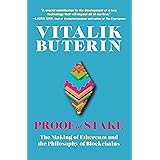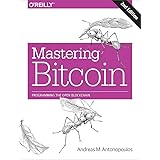Recent data from the world of cryptocurrency mining has shown a significant shift in profitability for specific hardware. For example, the Bitmain Antminer Z15, a powerful Equihash ASIC miner, was initially observed generating around $20 per day. However, within just a month, its daily earnings surged to an impressive $30-$32. This drastic change, as highlighted in the video above, prompts a deeper look into the factors influencing such gains and, more importantly, the inherent risks involved for residential miners eyeing these high-performance machines.
The journey of this Z15 miner exemplifies the dynamic nature of crypto profitability. In just under a month, it amassed approximately $746.53, or 0.06686205 Bitcoin, while operating on NiceHash. This figure, though compelling, is subject to the notoriously volatile cryptocurrency markets, emphasizing that past performance is not a guarantee of future returns.
Navigating Antminer Z15 Profitability: The Dance of Fiat and Satoshi Value
Understanding the profitability of an Antminer Z15 involves distinguishing between fiat (like USD) and Satoshi (Bitcoin’s smallest unit) values. The video illustrates that while the daily fiat earnings soared from $20 to over $30, the Satoshi value also generally trended upwards, albeit more slowly. This dual growth reflects two critical factors at play in the mining ecosystem.
Firstly, the rising price of Bitcoin itself significantly boosts fiat profitability. As Bitcoin’s value climbed from around $9,600 to over $11,000 in the observed period, the fiat equivalent of mined Satoshis naturally increased. Secondly, increased “altcoin dominance” for Equihash coins, such as Zcash, means these coins are gaining value relative to Bitcoin, translating into more Satoshis earned per unit of hashing power.
The Influence of Market Dynamics on Z15 Mining
The cryptocurrency market behaves much like an ocean, with tides of value constantly shifting. When the overall market surges, as it did during the period analyzed for the Antminer Z15, even stable mining operations can see their earnings swell. This market uplift is a powerful external force, often beyond the control of individual miners, yet it profoundly impacts their bottom line.
However, these gains can be fleeting, much like a fleeting summer storm. The video emphasizes that profitability figures can change drastically within weeks or even days. This volatility is a double-edged sword: it offers opportunities for rapid gains but also carries the risk of equally rapid declines, making long-term predictions akin to predicting the weather far in advance.
The Zcash Halving: A Ticking Clock for Equihash Miners
A crucial event looming for all Equihash miners, particularly those using the Antminer Z15, is the Zcash halving. Scheduled for approximately 103 days from the video’s recording, this event will effectively slash the block reward for Zcash miners by half. This is a fundamental economic mechanism in many cryptocurrencies, designed to control supply and maintain scarcity, similar to how central banks manage inflation in traditional economies.
Historically, halving events create significant market turbulence. For miners, it means that for the same amount of work, they will receive half the coin reward. This often forces a migration of hashing power to other, temporarily more profitable coins within the same algorithm, or even away from that algorithm entirely. The video notes that the Zcash hash rate was at an all-time high of 6.7 Giga sols, a direct consequence of the Z15’s release and its efficiency. Post-halving, much of this hash rate could disperse, impacting the profitability of not just Zcash but also other Equihash coins like Pirate Chain, Horizon, Hush, and Komodo.
Anticipating Hash Rate Migration and Its Effects
Imagine a bustling fishing pond that suddenly offers half the fish. Many fishermen would likely move to nearby ponds that are still abundant. This analogy perfectly describes what happens with hash rate migration after a halving. When Zcash’s rewards diminish, miners will naturally seek out other Equihash coins that offer better returns, causing their hash rates to surge.
This influx of mining power into alternative Equihash coins could, in turn, increase their network difficulty. Higher difficulty means it becomes harder to mine a single block, potentially reducing profitability on those coins as well. The delicate balance of profitability across the entire Equihash ecosystem will be tested, requiring miners to be agile and continuously monitor market conditions and pool switching strategies.
The Cost of Entry: A Rising Price Tag for the Z15
The initial investment for an Antminer Z15 is a significant hurdle, and its price has been anything but stable. When the video’s narrator acquired his Z15, the cost was around $3,200-$3,300. However, due to increased profitability and demand, subsequent batches saw prices jump to $4,300 for an August delivery. This is a clear indicator of how quickly demand can influence hardware costs in a burgeoning market.
Interestingly, the September batch saw a slight dip to $3,700, demonstrating that even with high demand, price adjustments can occur. This fluctuating price point makes the decision to buy an Antminer Z15 a complex calculation, as the time of purchase can drastically affect the potential return on investment. It’s like buying stocks; timing your entry can be everything.
Breaking Even: The Residential Miner’s Dilemma
For the narrator, with his first-batch Antminer Z15 and favorable market conditions, the estimated break-even point stands at approximately four to four-and-a-half months. This relatively quick return is largely attributed to what’s known as “first-mover advantage.” Being among the first to deploy highly efficient hardware means less competition for rewards in the early stages, yielding higher profits.
However, the video cautiously advises against immediate purchases for residential miners, highlighting the historical difficulty many have faced in breaking even on ASICs. Beyond the machine’s cost, residential miners typically contend with higher electricity rates, which can quickly erode profits. Think of it as running a small home-based bakery compared to a large commercial one; the bulk purchasing and subsidized utilities of the latter provide a significant competitive edge.
Residential vs. Commercial Mining: The Electricity Divide
The cost of electricity is arguably the most critical variable separating profitable commercial mining operations from struggling residential ones. Commercial farms often secure subsidized electricity rates, sometimes as low as two to four cents per kilowatt-hour. This dramatically reduces operating expenses, allowing them to remain profitable even during market downturns or after halving events.
For a residential miner paying standard rates, often ten cents or more per kilowatt-hour, the same ASIC miner might barely cover its electrical costs, let alone generate substantial profit. This disparity turns what could be a lucrative venture for commercial enterprises into a risky gamble for individuals at home. It’s like trying to compete in a high-stakes poker game with a much smaller bankroll; the odds are simply stacked differently.
Diversifying Mining Strategies: Beyond NiceHash
While NiceHash offers a convenient platform for selling hash rate, the video introduces an alternative: Luxor Switch. This “Equihash profit-switching pool” promises to maximize earnings by automatically switching between different Equihash blockchains (like Horizon, Komodo, and Zcash) based on real-time profitability. This active management strategy can be crucial in a post-halving environment, where profitability constantly shifts between coins.
The choice of mining pool or service is another layer of strategic decision-making for Antminer Z15 owners. Direct pool mining, especially with profit-switching capabilities, potentially offers greater control and optimized earnings compared to simply selling hash rate on a platform that may not transparently display its underlying coin choices. This adaptability is vital for maximizing returns in a dynamic market.
Is Buying an Antminer Z15 a Worthwhile Investment Today?
The question of whether to buy an Antminer Z15 now is complex, filled with risks and potential rewards. The current market conditions, including a rising crypto market and the “first-mover advantage” enjoyed by early adopters, have certainly shown impressive short-term profitability. However, these factors are not guaranteed to persist.
The impending Zcash halving, combined with the unpredictable nature of cryptocurrency prices and the high initial investment, makes the Antminer Z15 a “hard sell” for most residential miners. Without subsidized electricity or the ability to absorb significant financial risk, it often remains a speculative venture. The rapid changes in the Antminer Z15’s price and its profitability underscore the volatile and political landscape of ASIC mining, demanding careful consideration from anyone looking to invest in these powerful machines.







